Instrumentation Technician
100+ Instrumentation Technician Interview Questions and Answers
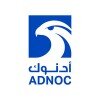
Asked in ADNOC

Q. What kind of precautions are needed while the plant is running?
Precautions are necessary to ensure safe and efficient plant operation.
Regular maintenance of equipment and machinery
Proper training and certification of personnel
Strict adherence to safety protocols and procedures
Regular inspections and audits to identify potential hazards
Effective communication and coordination among team members
Use of personal protective equipment (PPE) as required
Emergency response planning and drills
Proper handling and storage of hazardous materials
Envir...read more
Asked in Finesco International

Q. What PLC and DCS make and models are used in your plant?
The PLCs used in our plant are Siemens S7-300 and Allen Bradley ControlLogix. The DCS is Honeywell Experion.
Siemens S7-300 and Allen Bradley ControlLogix are the PLCs used in our plant
Honeywell Experion is the DCS used in our plant
Instrumentation Technician Interview Questions and Answers for Freshers
Asked in Hands-On Management Services

Q. 1) verious types of Transmetters like PT,LT,FT AND DPT must knowledge calibrations and trouble shooting work and maintenance work. 2)verious types of Pressure switches, pressure gauges, level switches calibrati...
read moreKnowledge of various transmitters, pressure switches, gauges, level switches, DCS and PLC working is required for instrumentation technician role.
Must have knowledge of calibrations, troubleshooting and maintenance work for PT, LT, FT and DPT transmitters
Should be familiar with calibrations and troubleshooting of pressure switches, pressure gauges and level switches
Well-versed with DCS and PLC working
Ability to read and interpret technical drawings and schematics
Familiarity w...read more

Asked in ADNOC

Q. How many types of vibration are there in the field?
There are three types of vibration in the field: axial, radial, and tangential.
Axial vibration occurs parallel to the axis of rotation.
Radial vibration occurs perpendicular to the axis of rotation.
Tangential vibration occurs at a right angle to both axial and radial vibration.
Vibration analysis is used to detect and diagnose problems in rotating machinery.
Excessive vibration can lead to premature failure of bearings, gears, and other components.
Asked in Finesco International

Q. How do you calibrate an interface level transmitter?
To calibrate an interface level transmitter, follow these steps:
Verify the transmitter is installed correctly and the process is stable
Determine the calibration range and select appropriate calibration fluids
Fill the vessel with the calibration fluid and record the transmitter output
Adjust the transmitter to match the expected output for each calibration point
Repeat the process for multiple calibration points to ensure accuracy
Document the calibration process and results for ...read more

Asked in ADNOC

Q. Are you familiar with preventive maintenance tasks?
Yes, I am familiar with preventive maintenance jobs.
Preventive maintenance involves regularly scheduled inspections, cleaning, and repairs to prevent equipment breakdowns.
I have experience performing preventive maintenance on various types of instrumentation equipment, such as calibrators, transmitters, and controllers.
Examples of preventive maintenance tasks I have performed include checking for leaks, replacing worn parts, and testing equipment performance.
I understand the ...read more
Instrumentation Technician Jobs


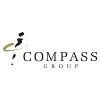
Asked in Sraco CSD Head Office

Q. What is the primary element used for temperature measurement?
The primary element for temperature measurement is a thermometer.
A thermometer is a device used to measure temperature.
It consists of a temperature sensor, such as a bulb filled with mercury or a thermocouple, and a scale to display the temperature.
Thermometers can be used in various industries and applications, including healthcare, weather forecasting, and industrial processes.
Examples of thermometers include mercury-in-glass thermometers, digital thermometers, and infrared...read more
Asked in Finesco International

Q. How many types of pressure gauges are there?
There are several types of pressure gauges including Bourdon tube, diaphragm, capsule, and bellows gauges.
Bourdon tube gauges are the most common and measure pressure through the movement of a curved tube.
Diaphragm gauges use a flexible membrane to measure pressure.
Capsule gauges use two diaphragms welded together to measure pressure.
Bellows gauges use a series of convolutions to measure pressure.
Other types of pressure gauges include digital gauges and differential pressure ...read more
Share interview questions and help millions of jobseekers 🌟


Asked in Schlumberger

Q. What is transmitter,RTD, thermocouple and control valve and actuators,
Transmitter, RTD, thermocouple, control valve, and actuators are all important components in instrumentation technology.
Transmitter is a device that converts a physical parameter into an electrical signal.
RTD (Resistance Temperature Detector) is a type of temperature sensor that measures temperature by detecting changes in electrical resistance.
Thermocouple is another type of temperature sensor that measures temperature by detecting changes in voltage.
Control valve is a devic...read more

Asked in Amazon

Q. What qualifications do you have?
The qualification for an Instrumentation Technician typically includes a degree or diploma in instrumentation technology or a related field.
A degree or diploma in instrumentation technology or a related field is usually required.
Knowledge of electrical and electronic systems is important.
Experience with calibration and troubleshooting of instruments is often necessary.
Familiarity with industry standards and regulations is beneficial.
Strong analytical and problem-solving skill...read more

Asked in ADNOC

Q. What is the temperature range of a thermocouple?
Thermocouple range refers to the temperature range within which a thermocouple can accurately measure temperature.
Thermocouple range varies depending on the type of thermocouple used.
Common thermocouple types include J, K, T, E, and N.
For example, a type K thermocouple has a range of -200 to 1350 degrees Celsius.
It is important to select the appropriate thermocouple type for the temperature range being measured.

Asked in PGP Glass

Q. What is control valve ?how many types ?
A control valve is a device used to regulate the flow of fluid or gas in a system. There are several types of control valves.
Control valves are used in various industries such as oil and gas, chemical, and power generation.
The most common types of control valves are globe valves, ball valves, butterfly valves, and diaphragm valves.
Control valves can be operated manually or automatically through an actuator.
They can control the flow rate, pressure, temperature, and level of a ...read more
Asked in Finesco International

Q. What is an RTD and a thermocouple?
RTD stands for Resistance Temperature Detector and thermocouple is a temperature sensor made of two different metals.
RTD measures temperature by detecting changes in electrical resistance of a metal wire as temperature changes.
Thermocouple measures temperature by detecting changes in voltage as temperature changes.
RTD is more accurate and stable than thermocouple.
Thermocouple is cheaper and can measure a wider range of temperatures than RTD.
RTD is commonly used in industries ...read more

Asked in ADNOC

Q. What is an anti-surge valve?
An anti-surge valve is a control valve used in a compressor system to prevent surge and maintain stable operation.
An anti-surge valve is typically installed in the discharge line of a compressor.
It is designed to protect the compressor from surge, which is a phenomenon of unstable flow and pressure that can cause damage to the compressor.
The valve opens or closes based on the compressor's operating conditions to maintain a safe flow rate and prevent surge.
It works in conjunct...read more

Asked in Tata Steel

Q. Why are straight lengths important when installing vortex orifice devices?
Straight lengths are important in installing vortex orifice devices to ensure accurate flow measurement.
Straight lengths help to stabilize the flow profile before it reaches the device
They prevent turbulence and eddies that can affect the accuracy of the measurement
The length required depends on the type of device and the flow conditions
For example, a vortex flow meter may require 10 diameters of straight pipe upstream and 5 diameters downstream
Proper installation ensures rel...read more
Asked in Finesco International

Q. How do you check the zero of DP type transmitters?
To check zero dp type transmitters, follow these steps:
Isolate the transmitter from the process
Ensure the transmitter is at atmospheric pressure
Verify that the output signal is reading zero
Adjust the zero if necessary
Reconnect the transmitter to the process and verify the output signal

Asked in Adani Ports and SEZ

Q. Types of control valve, pressure parameters,Types of gauge,what is scada,full form of scada and plc
Types of control valves, pressure parameters, types of gauges, SCADA and PLC full forms.
Types of control valves include globe, butterfly, ball, and diaphragm valves.
Pressure parameters include gauge pressure, absolute pressure, and differential pressure.
Types of gauges include pressure gauges, temperature gauges, and flow meters.
SCADA stands for Supervisory Control and Data Acquisition.
PLC stands for Programmable Logic Controller.

Asked in PGP Glass

Q. What are the input and output devices of a PLC?
Input devices of PLC are sensors, switches, and meters. Output devices are actuators, relays, and valves.
Input devices are used to collect data from the environment and send it to the PLC for processing.
Output devices are used to control the environment based on the processed data from the PLC.
Examples of input devices include temperature sensors, pressure switches, and flow meters.
Examples of output devices include motors, solenoid valves, and indicator lights.

Asked in MIDHANI

Q. What is P&ID ?; What is automation and control system? , What purpose use open loop and closed loop system? What is purpose of plc ,scada,DC's?
P&ID is a diagram that shows the interconnection of process equipment and instrumentation. Automation and control system is a system that controls and monitors industrial processes. Open loop and closed loop systems are used for different purposes. PLC, SCADA, and DCs are used for automation and control.
P&ID stands for Piping and Instrumentation Diagram
Automation and control system is used to control and monitor industrial processes
Open loop system is used for simple processe...read more
Asked in Roots Energy & Engineering Services

Q. Why is the square root of the output used for flow measurement in a differential pressure transmitter?
The square root output is used for flow in dp tx to linearize the relationship between flow and pressure.
Square root output is used to compensate for the non-linear relationship between flow and pressure.
It helps to convert the pressure measurement into a linear flow measurement.
This is done because the pressure drop across an orifice or a flow element is proportional to the square of the flow rate.
By taking the square root of the pressure measurement, the resulting output be...read more
Asked in Hands-On Management Services

Q. Describe your knowledge of RTD and Thermocouple calibration and troubleshooting.
RTD and thermocouples are essential for temperature measurement; calibration ensures accuracy and troubleshooting resolves issues.
RTD (Resistance Temperature Detector) uses resistance change to measure temperature; calibration involves comparing against a standard.
Thermocouples generate a voltage based on temperature difference; calibration requires a reference junction and known temperature points.
Common troubleshooting for RTDs includes checking for broken wires or poor con...read more

Asked in PGP Glass

Q. What is thermocouple? How it's used? All details
A thermocouple is a temperature sensor made of two different metals that produce a voltage proportional to the temperature difference.
Consists of two dissimilar metal wires joined at one end
Produces a voltage when exposed to a temperature gradient
Used to measure temperature in various industries such as HVAC, automotive, and manufacturing
Common types include J, K, and T thermocouples
Requires a reference junction to accurately measure temperature

Asked in ADNOC

Q. Have you worked with gas turbines?
Yes, I have experience working with gas turbines.
I have worked with gas turbines in my previous job as an instrumentation technician.
I am familiar with the maintenance and troubleshooting of gas turbines.
I have experience in calibrating and testing gas turbine sensors and instruments.
I have knowledge of the safety protocols and regulations related to gas turbines.
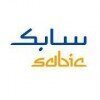
Asked in SABIC

Q. Many type of instrument calibration or maintenance or furnace operating by DCS or plc
As an Instrument Technician, I have experience in calibrating and maintaining various instruments such as furnaces, operated by DCS or PLC.
I have experience in calibrating and maintaining instruments such as pressure gauges, temperature sensors, flow meters, and level transmitters.
I am familiar with DCS and PLC systems and can troubleshoot any issues that may arise.
I have worked with furnaces and have experience in maintaining and repairing them.
I am knowledgeable in safety p...read more
Asked in Slns Engineering & Constructions

Q. What is instrumentation?
Instrumentation is the science and art of measuring and controlling variables in a process or system.
Instrumentation involves the use of various instruments and devices to measure and monitor physical quantities such as temperature, pressure, flow rate, and level.
It also includes the control and automation of processes using instruments like sensors, transmitters, controllers, and actuators.
Instrumentation technicians are responsible for installing, calibrating, maintaining, ...read more

Asked in Techno Concepts

Q. What are the outputs of transmitters and I/P relays?
Transmitters output signals, while I to P relays convert current to pressure for control systems.
Transmitters typically output a standardized signal, such as 4-20 mA or 0-10 V.
An example of a transmitter is a pressure transmitter that sends a 4-20 mA signal proportional to the measured pressure.
I to P relays convert an input current signal (e.g., 4-20 mA) into a proportional pneumatic output pressure.
For instance, a 4 mA input might correspond to 0 psi, while a 20 mA input co...read more

Asked in Techno Concepts

Q. What is the output of transmitters and I to P relays?
Transmitters convert physical parameters into signals; I to P relays convert current to pressure for control systems.
Transmitters measure variables like temperature, pressure, or flow and send signals to control systems.
I to P relays convert a current input (4-20 mA) into a proportional pneumatic output (3-15 psi).
Example: A temperature transmitter sends a 4-20 mA signal to a control system based on temperature readings.
I to P relays are used in pneumatic control systems to r...read more
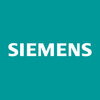
Asked in Siemens

Q. What is the difference between a Thermocouple and an RTD?
Thermocouples measure temperature using the voltage generated by two different metals, while RTDs use the change in resistance of a metal wire.
Thermocouples use two different metals to generate a voltage proportional to temperature, while RTDs use a metal wire with a known resistance-temperature relationship.
Thermocouples are typically less accurate but have a wider temperature range compared to RTDs.
RTDs are more stable and accurate over a narrow temperature range, making th...read more
Asked in Finesco International

Q. What is a booster relay?
A booster relay is an electrical device used to amplify or boost a signal.
It is commonly used in control circuits to increase the strength of a signal
It can be used to control high voltage or high current devices
Examples include motor starters, solenoid valves, and lighting circuits
Asked in Finesco International

Q. How do you calibrate a control valve?
Control valve calibration involves adjusting the valve to ensure it operates correctly and accurately.
Determine the valve's range and characteristics
Connect the valve to a calibration device
Adjust the valve's position to match the desired output
Verify the valve's accuracy and repeatability
Document the calibration process and results
Interview Questions of Similar Designations
Interview Experiences of Popular Companies


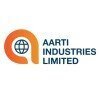





Reviews
Interviews
Salaries
Users

















